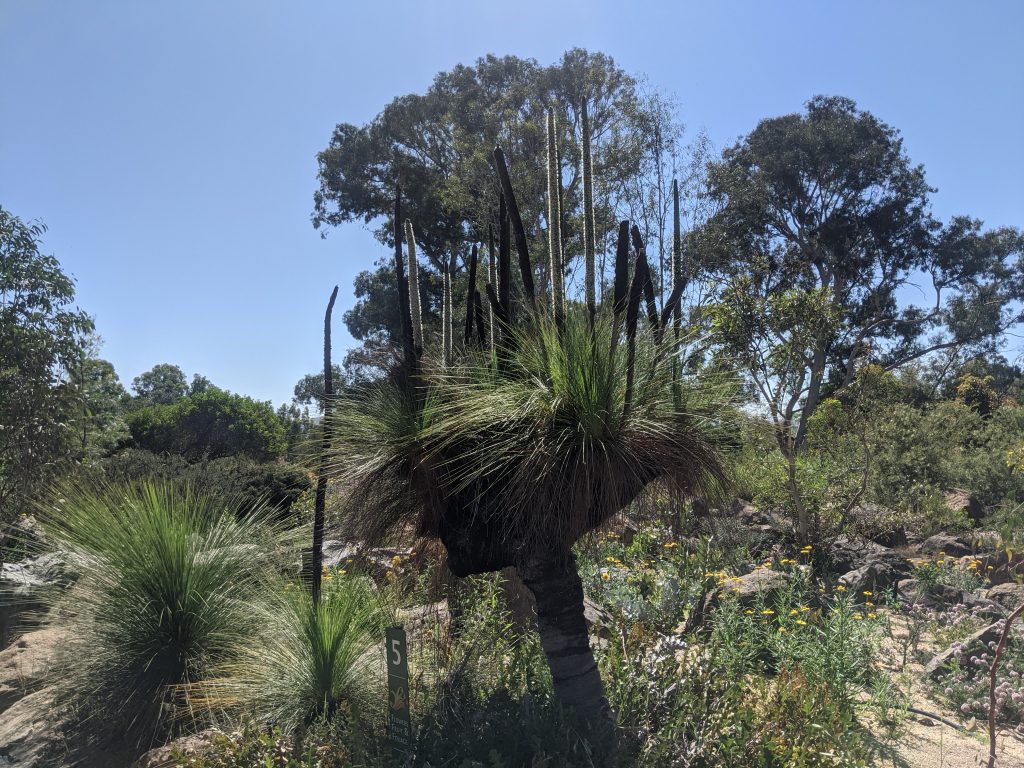Xanthorrhoea johnsonii (Johnson’s grass tree)
Aim: Reference genomes (Phase 2 project)
Project initiation: Oct 2020

Project collaborators:
- Todd McLay | Royal Botanic Gardens Victoria/University of Melbourne
- Scott Ferguson | Australian National University
- Ashley Jones | Australian National University
- Ben Schwessinger | Australian National University
- Joanne Birch | University of Melbourne
Project description:
Related project: Xanthorrhoea phylogenomics project
Xanthorrhoea (grass trees) are an iconic and instantly recognisable component of the Australian flora. Johnson’s grass tree (X. johnsonii) occurs in Queensland and New South Wales. Xanthorrhoea are among the most survivable plants against the harsh Australian environment and are very successful at surviving droughts and fire. Features that enable survivability include contractile roots, a well-protected meristem, and a trunk formed of old leaf bases sealed with resin.
Many species only flower after fire, with thousands of small flowers borne on a woody inflorescence stem. Investigating the genetic basis of these traits as well as identification of known functional traits linked to stress tolerance, would be extremely illuminating towards understanding evolution and adaptation of the Australian flora. Some species of Xanthorrhoea are extremely susceptible to root rot caused by cinnamon fungus (Phytophthora cinnamomi), and this is a major threat to Xanthorrhoea and other Australian natives.
A nuclear genome will allow us to investigate genomics underpinning the impact of such diseases on Xanthorrhoea, as well as other genera more broadly.
